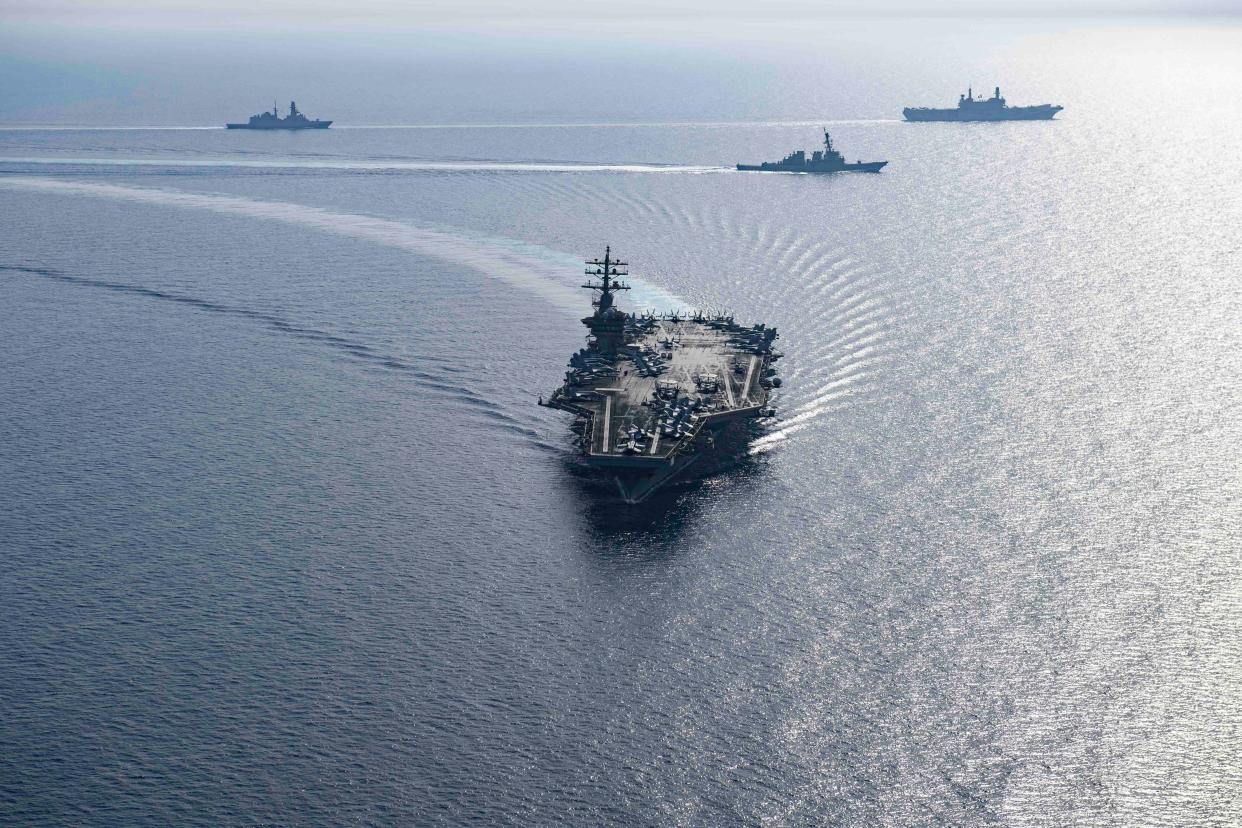A US Navy carrier strike group is headed home after months battling the Houthis in the Red Sea

A US Navy carrier strike group that's fought the Houthis for months is finally returning home.
The Dwight D. Eisenhower Carrier Strike Group left the Middle East on Saturday, the Pentagon said.
It will soon be replaced by the USS Theodore Roosevelt Carrier Strike Group.
The US Navy carrier strike group that's been battling the Houthis in the Red Sea is finally heading home after spending months in the region protecting shipping lanes from relentless attacks by the Iran-backed rebels.
The Dwight D. Eisenhower Carrier Strike Group left the Middle East on Saturday and will remain briefly in the US European Command area of responsibility before returning stateside. It will not see its deployment extended for a third time.
Its departure follows "more than seven months deployed in support of US regional deterrence and force protection efforts," Pentagon Press Secretary Maj. Gen. Pat Ryder announced in a statement.
The USS Theodore Roosevelt Carrier Strike Group, operating in the Indo-Pacific region, will soon head to the Middle East to replace the strike group.
The Eisenhower strike group — which consists of the aircraft carrier Ike and several other warships — originally deployed to the Eastern Mediterranean in October but was quickly redirected to the Middle East to defend shipping lanes from unrelenting Houthi attacks.
Since then, the Eisenhower strike group has intercepted scores of missiles and drones — both in the air and in the water — and also targeted the rebels directly in Yemen. These have been a mix of joint strikes alongside the British military and preemptive strikes designed to eliminate a threat before the Houthis can launch it.
"During its deployment, the IKE CSG protected ships transiting the Red Sea, Bab-el-Mandeb and the Gulf Aden, rescued innocent mariners against the unlawful attacks from the Iranian-backed Houthis, and helped to deter further aggression," Ryder said.
The reshuffling of American naval assets comes amid concerns over the long-term sustainability of the counter-Houthi operations. US intelligence suggested last month that the Houthi threat is likely to remain active for some time, and Defense Secretary Lloyd Austin had already extended the Eisenhower strike group's deployment twice.
During its time in the Red Sea, the strike group fired off more than 500 munitions, totaling some $1 billion, and sailed more than 55,000 miles. Its aircraft have also flown over 30,000 hours.
Despite the Eisenhower's presence, the Houthis continue to attack shipping lanes. The rebels have already struck multiple commercial vessels in June alone, including one with a naval drone for the first time since they began their campaign in the fall.
Ryder, meanwhile, said the Roosevelt strike group will leave the Indo-Pacific region next week upon completion of a scheduled exercise and sail for the Middle East "to continue promoting regional stability, deter aggression, and protect the free flow of commerce in the region."
Read the original article on Business Insider

